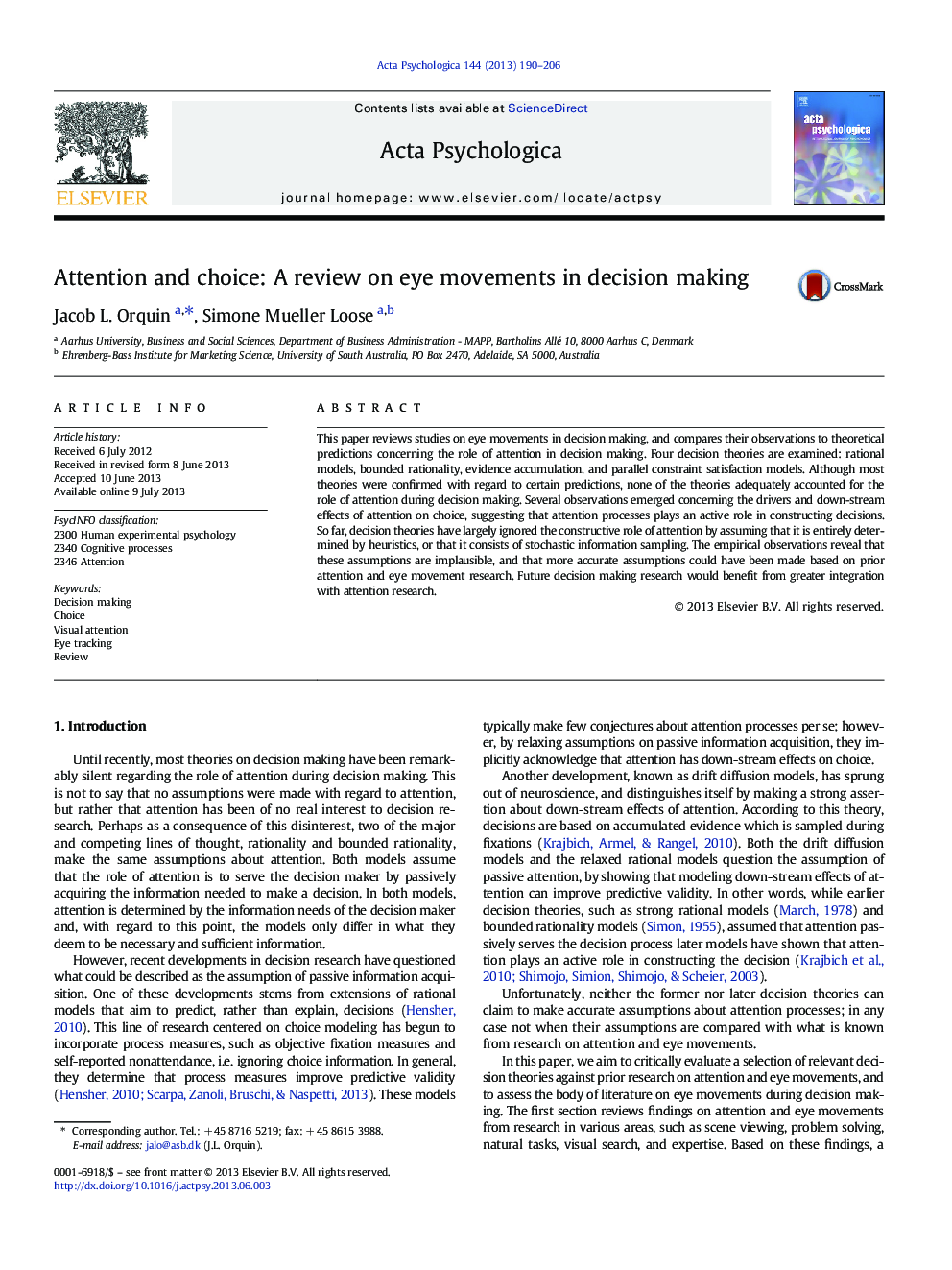| Article ID | Journal | Published Year | Pages | File Type |
|---|---|---|---|---|
| 919915 | Acta Psychologica | 2013 | 17 Pages |
•Many decision theories wrongly assume that eye movements are determined by the decision process.•Eye movements are influenced by top down, bottom up, and working memory processes.•Eye movements shape decisions by gatekeeping information in the decision process.
This paper reviews studies on eye movements in decision making, and compares their observations to theoretical predictions concerning the role of attention in decision making. Four decision theories are examined: rational models, bounded rationality, evidence accumulation, and parallel constraint satisfaction models. Although most theories were confirmed with regard to certain predictions, none of the theories adequately accounted for the role of attention during decision making. Several observations emerged concerning the drivers and down-stream effects of attention on choice, suggesting that attention processes plays an active role in constructing decisions. So far, decision theories have largely ignored the constructive role of attention by assuming that it is entirely determined by heuristics, or that it consists of stochastic information sampling. The empirical observations reveal that these assumptions are implausible, and that more accurate assumptions could have been made based on prior attention and eye movement research. Future decision making research would benefit from greater integration with attention research.
